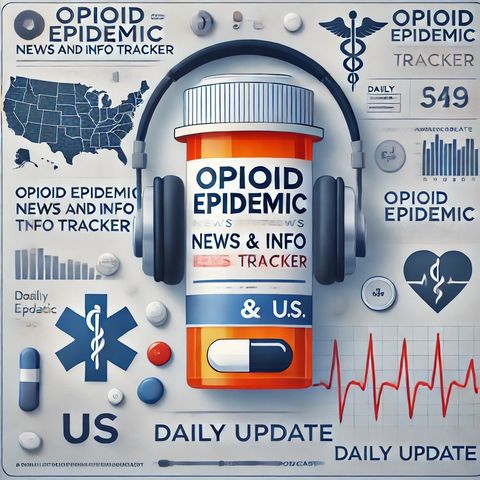"Deadly Opioid Epidemic Ravages Indigenous Communities in Canada"

Download and listen anywhere
Download your favorite episodes and enjoy them, wherever you are! Sign up or log in now to access offline listening.
"Deadly Opioid Epidemic Ravages Indigenous Communities in Canada"
This is an automatically generated transcript. Please note that complete accuracy is not guaranteed.
Description
## The Devastating Impact of the Opioid Epidemic on Indigenous Communities in Canada The opioid epidemic in Canada has unfolded as a dire and disproportionate crisis for Indigenous communities, highlighting...
show moreThe opioid epidemic in Canada has unfolded as a dire and disproportionate crisis for Indigenous communities, highlighting deep-seated issues of colonialism, racism, and intergenerational trauma.
### Disproportionate Impact
Indigenous Peoples, who make up only 2.6% of Canada's population, account for a staggering 10% of overdose deaths. This disparity is starkly evident in provinces like Alberta and British Columbia, where First Nations individuals are five to eight times more likely to experience an opioid-related overdose and subsequent death compared to their non-Indigenous counterparts.
In Alberta, the data is particularly grim, with First Nations people dying from opioids at more than eight times the rate of the rest of the population. The years 2021 and 2022 saw 373 and 344 unintentional opioid poisonings, respectively, translating to over 200 deaths per 100,000 people annually.
### Intergenerational Trauma and Structural Factors
The root causes of this crisis are complex and multifaceted. Intergenerational trauma, poverty, and ongoing systemic injustices play significant roles. Dr. Esther Tailfeathers, a family physician with the Blood Tribe, emphasizes that "poverty and trauma are the two biggest factors" contributing to the high rates of opioid-related deaths among Indigenous people.
The legacy of colonialism and the ongoing effects of residential schools have created a cycle of trauma that exacerbates substance use disorders. This is compounded by the lack of access to adequate healthcare, housing, and social services in many Indigenous communities.
### Gender and Age Dynamics
The opioid epidemic affects Indigenous men and women differently. In Alberta, both men and women are equally likely to die from opioid-related overdoses, whereas in British Columbia, men are more likely to succumb than women. However, Indigenous women are significantly over-represented in fatal overdose statistics, particularly those aged 50-54, who are more likely to die from opioid overdoses compared to their non-Indigenous counterparts.
### Community Responses and Challenges
Indigenous communities are not passive victims of this crisis; they are actively seeking solutions. In southern Alberta, communities like the Piikani Nation and the Blood Tribe have declared states of emergency to combat the opioid crisis. These declarations aim to target drug traffickers and provide urgent support to affected families[
Information
| Author | QP-4 |
| Organization | William Corbin |
| Website | - |
| Tags |
Copyright 2024 - Spreaker Inc. an iHeartMedia Company

Comments